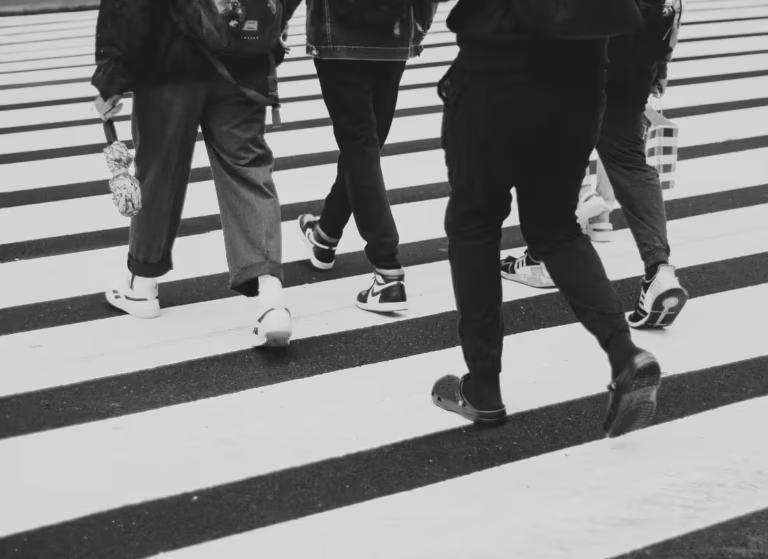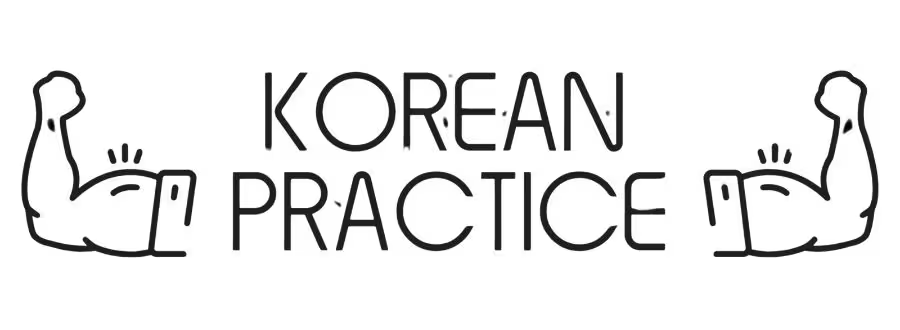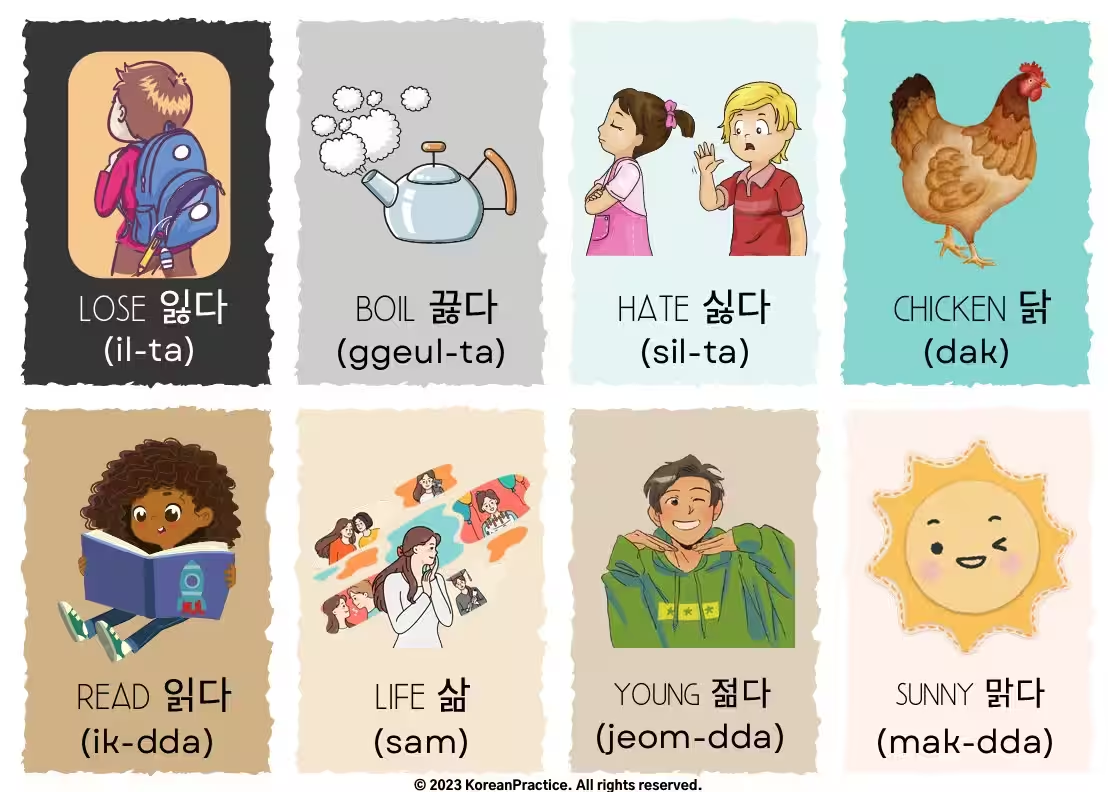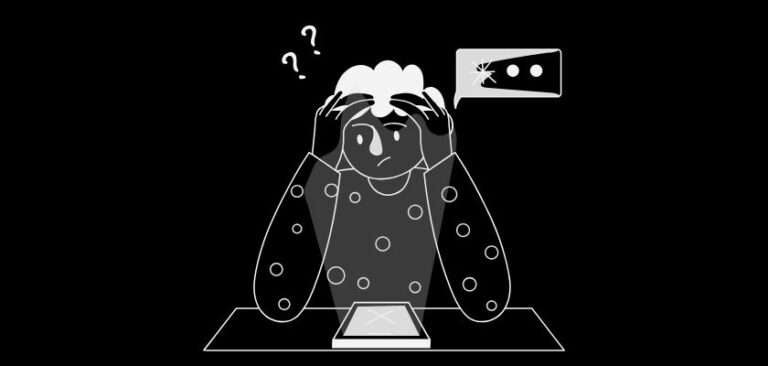Suh ChangWhoon
Written by 서 창훈, a certified Korean teacher with 14+ years of experience in Japan. He previously worked as a government officer, cybersecurity consultant, and English interpreter. Today, he teaches Korean in real classrooms without complex grammar explanations — instead, he trains students’ brains to speak naturally. His unique method is now the foundation of all his Korean courses.
Table of Contents
Introduction to Directions in Korean
Acquiring directional phrases is crucial for effective communication. In Korean, understanding the concept of directions not only facilitates navigation but also enhances interactions with native speakers. Directions in Korean are integral to daily conversations, encompassing a range of scenarios from asking for help in locating a place to providing guidance to others.
Korean direction words
The ability to give and understand directions in Korean can significantly improve a language learner’s confidence and practicality. For instance, when visiting South Korea, being equipped with essential Korean direction words such as “왼쪽” (left), “오른쪽” (right), and “직진” (straight) will be invaluable.
위
Firstly, navigating directions in Korean can feel like scaling a mountain, but let’s start with something foundational: the concept of “위.” Whether it means “above,” “up,” or “on,” understanding “위” is crucial for describing spatial relationships and locations.
Original Korean Sentence
책이 책상 위에 있어요.
Pronunciation Guide
채기 (chae-gi) 책쌍 (chaek-ssang) 위에 (wi-e) 잇써요 (it-sseo-yo).
Meaning and Context
책 (book) * 이 (book is the subject) 책상 (desk) * 위에 (on top of) 있 (to be) 어요 (I’m telling you polite and friendly).
Grammar
* Subject Marker 이/가: Used to indicate the subject of the sentence.
* Location Particle 에: Indicates location (on, in, at).
* 있다 (it-da): To exist, to be (conjugated to 있어요 for polite form).
* Politeness Level: ‘-요’ at the end makes the sentence polite but not too formal.
Culture
Use of “있다” (to exist) is common when describing the location of objects.
English Translation
The book is on the desk.
Literal Translation
book is on desk.
This is just a small taste of my sentence breakdowns.
My “Story Style Breakdown™” method — where I teach grammar through simple, story-like sentence breakdowns—is only inside my course.
Most Korean courses stop at grammar. Mine goes beyond — with stories, breakdowns, and real practice to help you speak.
안
안 (Inside): “Want to talk about what’s inside? In Korean, describing directions in Korean and what’s within a space requires specific vocabulary. Let’s explore how to say ‘inside’ in Korean.

Original Korean Sentence
고양이가 상자 안에 있어요.
Pronunciation Guide
고양이가 (go-yang-i-ga) 상자 (sang-ja) 아네 (a-ne) 잇써요 (it-sseo-yo).
Meaning and Context
고양이 (cat) * 가 (cat is the subject) 상자 (box) * 안에 (inside) 있 (is) 어요 (is; I’m telling you polite and friendly).
Grammar
* Subject Marker 이/가: Used to indicate the subject of the sentence.
* Location Particle 에: Indicates location (in).
* 안 (an): inside
English Translation
The cat is in the box.
Literal Translation
Cat is in box.
왼쪽
왼쪽 (Left): “Turning *left* can be tricky if you don’t know how! Understanding directions in Korean means knowing how to say ‘left’. Let’s learn the Korean term and its applications.
Original Korean Sentence
왼쪽에 젓가락이 있어요.
Pronunciation Guide
왼쪼게 (oen-jjog-e) 젓까라기 (jeot-gga-ra-gi) 잇써요 (it-sseo-yo).
Meaning and Context
왼쪽 (left side) * 에 (on) 젓가락 (chopsticks) * 이 (chopsticks are the subject) 있어요 (there are).
English Translation
There are chopsticks on the left side.
Literal Translation
There are chopsticks on left side.
오른쪽
오른쪽 (Right): “Taking a *right* turn? When giving directions in Korean, knowing how to say ‘right’ is crucial. This post will guide you through the Korean word for ‘right’ and its usage.
Original Korean Sentence
학교가 은행 오른쪽에 있어요.
Pronunciation Guide
학꾜가 (hak-ggyo-ga) 은행 (eun-haeng) 오른쪼게 (o-reun-jjo-ge) 잇써요 (it-sseo-yo).
Meaning and Context
학교 (school) 가 (school is the subject) 은행 (bank) 오른쪽 (right side) 에 (on the right side) 있 (to exist) 어요 (I’m telling you polite and friendly).
English Translation
The school is on the right side of the bank.
Literal Translation
School exist on right side (of) bank.
아래
아래 (Below/Under): “Something *below* or *under*? Describing positions like this is important. We’ll learn how to express ‘below’ or ‘under’ when giving directions in Korean.
Original Korean Sentence
제 가방은 의자 아래에 있어요.
Pronunciation Guide
제 (je) 가방은 (ga-bang-eun) 의자 (ui-ja) 아래에 (a-rae-e) 잇써요 (it-sseo-yo).
Meaning and Context
제 (my; in a humble way) 가방 (bag) 은 (my bag is the topic) 의자 (chair) 아래에 (under) 있어요 (is).
English Translation
My bag is under the chair.
Literal Translation
My bag is under chair.
앞
앞 (Front): “Looking *ahead* or at the *front*? Directions in Korean often involve indicating what’s in front of you. We’ll cover the Korean word for ‘front’ and how to use it.
Original Korean Sentence
저는 교실 앞에 있어요.
Pronunciation Guide
저는 (jeo-neun) 교실 (gyo-sil) 아페 (a-pe) 잇써요 (it-sseo-yo).
Meaning and Context
저 (I; in a humble way) * 는 (I am the topic) 교실 (classroom) 앞 (front) * 에 (in front of) 있어요 (am/exist).
Grammar
* Topic Marker 은/는: Used to indicate the topic of the sentence.
English Translation
I am in front of the classroom.
Literal Translation
I am in front of classroom.
뒤
뒤 (Behind): “What’s *behind* you? When providing directions in Korean, it’s essential to know how to describe what’s behind. Let’s delve into the Korean word for ‘behind’.
Original Korean Sentence
자동차가 집 뒤에 있어요.
Pronunciation Guide
자동차가 (ja-dong-cha-ga) 집 (jip) 뒤에 (dwi-e) 잇써요 (it-sseo-yo).
Meaning and Context
자동차 (car) * 가 (car is the subject) 집 (house) * 뒤에 (behind) 있어요 (is).
Grammar
* Location Particle 에: Indicates location (at, on).
English Translation
The car is behind the house.
Literal Translation
Car is behind house.
옆
옆 (Beside/Next to): “Something *beside* or *next to* you? Accurately describing locations requires knowing how to say ‘beside’ or ‘next to’. We will explore how to say ‘beside/next to’ when giving directions in Korean.
Original Korean Sentence
공원이 우리 집 옆에 있어요.
Pronunciation Guide
공워니 (gong-wo-ni) 우리 (uri) 집 (jip) 여페 (yeo-pe) 잇써요 (it-sseo-yo).
Meaning and Context
공원 (park) 이 (park is the subject) 우리 (our) 집 (house) 옆에 (next to) 있어요 (is).
English Translation
The park is next to our house.
Literal Translation
Park is next to our house.
가운데
가운데 (Middle/Center): “Right in the *middle* or *center*? In Korean, indicating the center point is key for clear directions in Korean. Learn the Korean term for ‘middle’ and its applications.

Original Korean Sentence
액자가 벽 가운데에 있어요.
Pronunciation Guide
액짜가 (aek-jja-ga) 벽 (byeok) 가운데에 (ga-un-de-e) 잇써요 (it-sseo-yo).
Meaning and Context
액자 (picture frame) 가 (picture frame is the subject) 벽 (wall) 가운데 (center) * 에 (in) 있어요 (is).
English Translation
The picture frame is in the middle of the wall.
Literal Translation
Picture frame is in middle (of) wall.
밖
밖 (Outside): “Stepping *outside*? Describing what’s *outside* a space is a common need. We’ll learn how to say ‘outside’ in the context of directions in Korean.
Original Korean Sentence
강아지가 문 밖에 있어요.
Pronunciation Guide
강아지가 (gang-a-ji-ga) 문 (mun) 바께 (ba-gge) 잇써요 (it-sseo-yo).
Meaning and Context
강아지 (puppy) 가 (puppy is the subject) 문 (door) 밖에 (outside) 있 (is) 어요 (I’m telling you polite and friendly).
English Translation
The puppy is outside the door.
Literal Translation
Puppy is outside door.
건너편
건너편 (Across): “Something *across* from you? Giving directions often involves indicating what’s across the street or space. We’ll discover how to say ‘across’ when providing directions in Korean.’
Original Korean Sentence
저의 집은 우체국 건너편에 있어요.
Pronunciation Guide
저에 (jeo-e) 지븐 (ji-beun) 우체국 (u-che-guk) 건너펴네 (geon-neo-pyeo-ne) 잇써요 (it-sseo-yo)
Meaning and Context
저의 (my; in a humble way) 집 (house) 은 (my house is the topic) 우체국 (post office) 건너편 (opposite side) 에 (on) 있어요 (is).
English Translation
My house is across from the post office.
Literal Translation
My house is on opposite post office.
Cardinal directions in Korean
Moreover, mastering cardinal directions in Korean—such as “북쪽” (north), “남쪽” (south), “동쪽” (east), and “서쪽” (west)—is equally beneficial. These terms serve as a foundation for understanding more complex directions and are frequently encountered in signage, maps, and conversations. The capacity to articulate directions in Korean language reflects a learner’s progress and commitment to understanding Korean culture at a deeper level.
동쪽
As the sun rises, we turn to “동” (dong), the Korean direction word for east. In the context of Cardinal directions in Korean, east symbolizes new beginnings, the sunrise, and the direction from which Korea anticipates influence and collaboration.
Original Korean Sentence
해는 동쪽에서 뜬다.
Pronunciation Guide
해는 (hae-neun) 동쪼게서 (dong-jjo-ge-seo) 뜬다 (tteun-da)
Meaning and Context
해 (Sun) * 는 (topic marker) 동쪽 (East) * 에서 (from; at) 뜨 (to rise) * ㄴ다 (declarative ending).
Pronunciation Patterns for Conjugations
뜨다 + -ㄴ다 = 뜬다
Grammar
* Topic Marker (는/은): ‘는’ indicates the sun as the main topic of the sentence.
* Location Particle (에서): ‘에서’ indicates the place where the action occurs (rising).
* Declarative Ending (-ㄴ다/는다): Used to state a fact.
English Translation
The sun rises in the east.
Literal Translation
Sun rise from east.
서쪽
Finally, we arrive at “서” (seo), the Korean direction word signifying west. When considering Cardinal directions in Korean, west represents the setting sun, the end of the day, and a sense of completion.
Original Korean Sentence
해는 서쪽으로 진다.
Pronunciation Guide
해는 (hae-neun) 서쪼그로 (seo-jjo-geu-ro) 진다 (jin-da)
Meaning and Context
해 (Sun) 는 (topic marker) 서쪽 (West) 으로 (towards; to) 지다 (to set) ㄴ다 (declarative ending).
English Translation
The sun sets in the west.
Literal Translation
Sun set towards west.
남쪽
“남” (nam), or south, represents warmth, summer, and prosperity within the framework of cardinal directions in Korean. This Korean direction word is culturally significant, often carrying connotations of growth and abundance.
Original Korean Sentence
한국은 북반구에 있고, 필리핀은 남쪽에 있다.
Pronunciation Guide
한구근 (han-gu-geun) 북빤구에 (buk-bban-gu-e) 잇꼬 (it-ggo) 필리피는 (pil-ri-pi-neun) 남쪼게 (nam-jjo-ge) 잇따 (it-dda)
Meaning and Context
한국 (Korea) 은 (topic marker) 북반구 (Northern Hemisphere) 에 (in; at) 있 (to be) 고 (and) 필리핀 (Philippines) 은 (topic marker) 남쪽 (South) 에 (in; at) 있다 (to be).
English Translation
Korea is in the Northern Hemisphere, and the Philippines is in the South.
Literal Translation
Korea is in Northern Hemisphere, and Philippines is in South.
북쪽
When exploring the cardinal directions in Korean, we begin with “북” (buk), which means north. In Korean culture, north is often associated with cold, winter, and sometimes even Korea’s neighbor to the north. Understanding these Korean direction words opens a deeper understanding of Korean geography.
Original Korean Sentence
북한은 한국의 북쪽에 위치해 있다.
Pronunciation Guide
북카는 (buk-ka-neun) 한구게 (han-gu-ge) 북쪼게 (buk-jjo-ge) 위치해 (wi-chi-hae) 잇따 (it-dda)
Meaning and Context
북한 (North Korea) 은 (topic marker) 한국 (South Korea) 의 (of) 북쪽 (North) 에 (in; at) 위치하 (to be located) * 해 있다 (stative aspect).
Grammar
(-아/어 있다): indicates that the subject is *in a state of* being located.
English Translation
North Korea is located to the north of South Korea.
Literal Translation
North Korea is located in north of South Korea.
Giving directions in Korean
Finally, learning how to give directions in Korean is not merely an academic exercise; it is a vital skill that encourages engagement with the environment and promotes meaningful conversations. As language learners embrace these directional phrases, they will enhance their overall communication skills, leading to a richer and more fulfilling experience in their language acquisition journey.
오른쪽으로
오른쪽으로 (to the right): Learn how to say ‘to the right’ in Korean! This is a fundamental Korean direction word when giving directions in Korean.
Original Korean Sentence
오른쪽으로 가세요.
Pronunciation Guide
오-른-쪼그로 (o-reun-jjo-geu-ro) 가세요 (ga-se-yo).
Meaning and Context
오른쪽 (right side) 으로 (to/toward) 가 (to go) * 세요 (please; honorific ending).
Grammar
* Polite Imperative: ‘-세요’ is a common ending used to politely command or request someone to do something.
Culture
Directions in Korea are often given with respect, even to strangers. The ‘-세요’ ending adds a layer of politeness.
English Translation
Please go to the right.
Literal Translation
Please go to right.
왼쪽으로
왼쪽으로 (to the left): Discover the Korean word for ‘left.’ Essential for navigating and giving directions in Korean.
Original Korean Sentence
왼쪽으로 도세요.
Pronunciation Guide
왼쪼그로 (oen-jjo-geu-ro) 도세요 (do-se-yo).
Meaning and Context
왼쪽 (left side) 으로 (to/toward) 돌 (to turn) 세요 (please).
Pronunciation Patterns for Conjugations
돌 -> 도 to make pronunciation easier.
English Translation
Please turn to the left.
Literal Translation
Please turn to left.
직진
직진 (straight): Understand ‘straight’ in Korean. A key phrase when giving directions in Korean, meaning to go forward without turning.
Original Korean Sentence
이 길로 직진하면 오른쪽에 공원이 있어요.
Pronunciation Guide
이 (i) 길로 (gil-ro) 직찐하면 (jik-jjin-ha-myeon) 오른쪼게 (o-reun-jjo-ge) 공워니 (gong-wo-ni) 잇써요 (it-sseo-yo).
Meaning and Context
이 (this) 길 (road/street) 로 (along/by way of) 직진하 (to go straight) 면 (if/when) 오른쪽에 (on the right side) 공원 (park) 이 (subject marker) 있 (there is) 어요 (polite ending).
English Translation
If you go straight on this road, there is a park on the right.
Literal Translation
If (you) go straight along this road, there is park on right side.
쭉
쭉: Explore the nuances of ‘쭉’ in Korean. Often used with ‘가세요’ (go), it means to continue straight for a distance. A helpful Korean direction words in longer routes.

Original Korean Sentence
앞으로 쭉 가세요.
Pronunciation Guide
아프로 (a-peu-ro) 쭉 (jjuk) 가세요 (ga-se-yo).
Meaning and Context
앞 (front) 으로 (forward) 쭉 (straight) 가 (to go) 세요 (please; polite form).
English Translation
Go straight ahead.
Literal Translation
Go straight toward front.
사이
사이 (between): Learn ‘사이’, the Korean word for ‘between’. Useful for specifying a location relative to other objects when giving directions in Korean.
Original Korean Sentence
우체국은 병원과 학교 사이에 있어요.
Pronunciation Guide
우체구근 (u-che-gu-geun) 병원과 (byeong-won-gwa) 학꾜 (hak-ggyo) 사이에 (sa-i-e) 잇써요 (it-sseo-yo).
Meaning and Context
우체국 (post office) 은 (topic marker) 병원 (hospital) 과 (and) 학교 (school) 사이 (between) 에 (at/in/location) 있어요 (is located; polite form).
English Translation
The post office is between the hospital and the school.
Literal Translation
Post office is between hospital and school.
우회전
우회전 (right turn): Master the term ‘우회전’, which means ‘right turn’ in Korean. Crucial for precise giving directions in Korean.
Original Korean Sentence
사거리가 나오면 우회전한 후에 직진하세요.
Pronunciation Guide
사거리가 (sa-geo-ri-ga) 나오면 (na-o-myeon) 우회전한 (u-hoe-jeon-han) 후에 (hu-e) 직찐 (jik-jjin) 하세요 (ha-se-yo).
Meaning and Context
사거리 (intersection) 가 (subject marker) 나오면 (if appears) 우회전 (right turn) * 하 (to do) ㄴ 후에 (after) 직진 (straight) 하세요 (please do; polite form).
Grammar
* verb stem + ㄴ/은 후에 (after verbing)
English Translation
After you make a right turn at the intersection go straight.
Literal Translation
If intersection appear go straight after doing right turn.
좌회전
좌회전 (left turn): Familiarize yourself with ‘좌회전’, meaning ‘left turn’ in Korean. A must-know when giving directions in Korean!
Original Korean Sentence
저기 사거리에서 좌회전하세요.
Pronunciation Guide
저기 (jeo-gi) 사거리에서 (sa-geo-ri-e-seo) 좌회전하세요 (jwa-hoe-jeon-ha-se-yo).
Meaning and Context
저기 (over there) 사거리 (intersection) 에서 (at) 좌회전 (left turn) 하세요 (please do; polite form).
English Translation
Turn left at the intersection over there.
Literal Translation
Do left turn at intersection over there.
건너다
건너다 (cross): Understand the Korean verb ‘건너다’, meaning ‘to cross’. Often used when giving directions in Korean to indicate crossing a street or other barrier.

Original Korean Sentence
왼쪽으로 가서 길을 건너세요.
Pronunciation Guide
왼쪼그로 (oen-jjo-geu-ro) 가서 (ga-seo) 기를 (gi-reul) 건너세요 (geon-neo-se-yo)
Meaning and Context
왼쪽 (left) 으로 (to/towards) 가 (to go) 아서 (and then) 길 (road) 을 (object marker) 건너 (to cross) 세요 (please).
Pronunciation Patterns for Conjugations
가 + 아 = 가
When rapidly pronounced, ‘가’ and ‘아’ naturally combine to form ‘가’.
English Translation
Go to the left and cross the street.
Literal Translation
Go to left and cross street.
Practice Exercises
Here are 5 Korean direction quizzes!
Quiz 1:
Question: You are standing in front of the 신한은행 (Shinhan Bank) and want to go to the 학교 (school). You hear someone say, “은행에서 나와서 쭉 가면 사거리가 있어요. 거기서 오른쪽으로 가세요.” What direction should you turn at the intersection?
Answer Choices:
1 Left
2 Right
3 Straight
4 Go back
Quiz 2:
Question: You are at the post office (우체국) and need to get to the police station (경찰서). Someone tells you, “우체국 뒤에 있는 횡단보도를 건너서 앞으로 조금만 가면 경찰서가 바로 왼쪽에 있어요.” After crossing the crosswalk behind the post office and walking a short distance, which side of the street will the police station be on?
Answer Choices:
1 Right
2 Left
3 Straight ahead
4 Behind you
Quiz 3:
Question: You are at a 지하철역 (subway station) and someone asks you, “화장실이 어디에 있어요?” (Where is the restroom?). You reply, “개찰구에서 나와서 왼쪽으로 쭉 가면 화장실이 있어요.” (Come out of the ticket gate and go straight to the left, and there is the restroom.) Which direction do you tell them to turn after exiting the ticket gate?
Answer Choices:
1 Right (오른쪽)
2 Left (왼쪽)
3 Straight (직진)
4 Backwards (뒤로)
Quiz 4:
Question: You are at your friend’s 아파트 (apartment) and want to go to the 편의점 (convenience store). Your friend says, “아파트 앞에서 나와서 오른쪽으로 돌아서 쭉 가면 편의점이 길 건너편에 바로 있어요.” What is the direction you need to turn after coming out the apartment to find the convenience store?
Answer Choices:
1 Turn Left
2 Turn Right
3 Go Straight
4 Go Back
Quiz 5:
Question: You’re at a large 공원 (park) and want to find the 분수대 (fountain). You see a park worker and ask for directions. They reply, “여기서 쭉 가면 갈림길이 있어요. 거기서 북쪽으로 가세요.” You know that the park entrance is to the south. Which direction from the 갈림길 (fork in the road) should you go to reach the 분수대 (fountain)?
Answer Choices:
1 North (북쪽)
2 South (남쪽)
3 East (동쪽)
4 West (서쪽)
**Answer Key:**
1. Right
2. Left
3. Left
4. Turn Right
5. North (북쪽)
🎁 Free Korean Flashcard
Conclusion
In conclusion, mastering directions in Korean is an essential step toward effective communication and deeper engagement with the language.
As we’ve explored, understanding directions not only helps you navigate your environment with confidence but also enriches your interactions with native speakers, allowing for more meaningful conversations and connections.
Whether you’re asking for directions or assisting someone in finding their way, these phrases are invaluable tools in your language-learning journey. We encourage you to practice these phrases regularly and make them a part of your daily conversations. With resources like KoreanPractice, you can enhance your vocabulary and gain the confidence to communicate effectively in a variety of scenarios.
So why wait? Start using these essential directions in Koreans today and experience the difference they can make in your Korean language skills!








